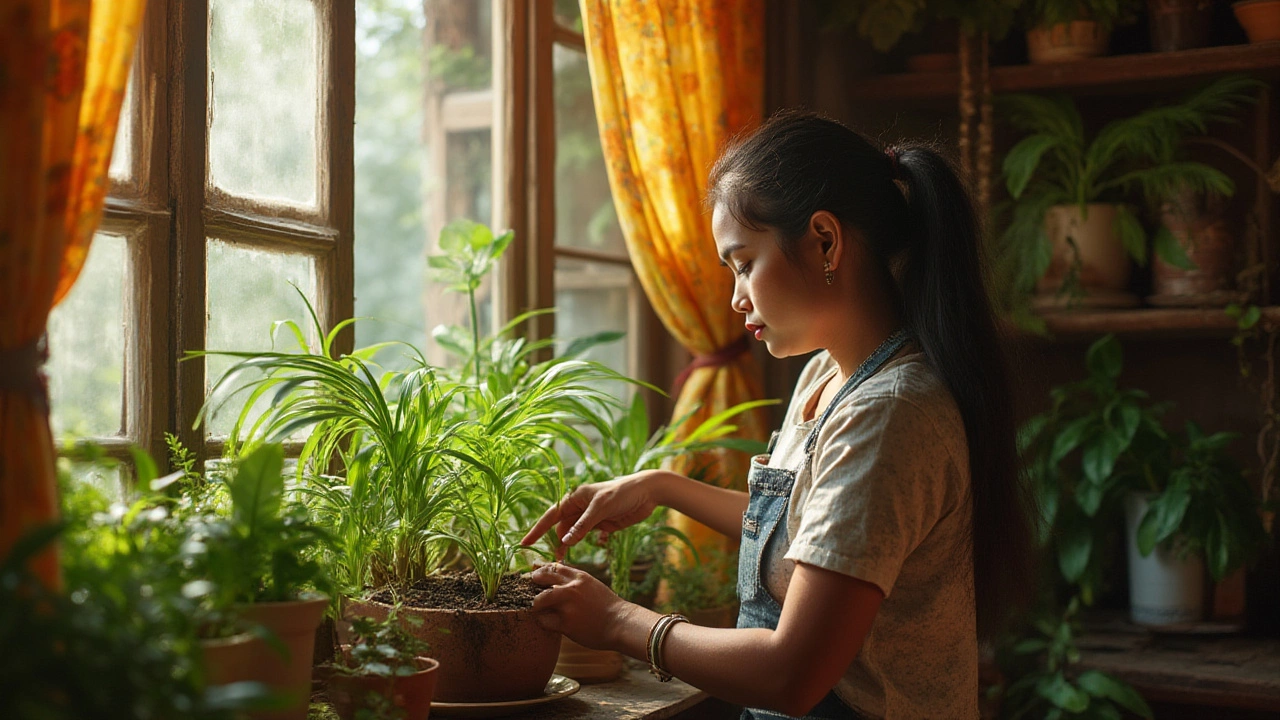Houseplant Sunlight: Find the Perfect Light for Your Indoor Greens
Ever wonder why some of your houseplants look droopy while others thrive? The biggest clue is usually the light they get. Too much sun can scorch leaves, too little can stunt growth. Getting the balance right doesn’t need a science degree – just a few simple steps.
Understanding Light Types
First, know the three light zones most homes have: bright direct, bright indirect, and low light. Bright direct light is what you get right next to a south‑facing window, where the sun hits the plant for most of the day. Think cactus, succulents, and herbs – they love that intense, unfiltered sunshine.
Bright indirect light is a step down. The sun still shines, but it’s filtered through a curtain or reflected off a wall. Many popular houseplants like pothos, ZZ plant, or snake plant do best here. They get enough energy to grow without getting burned.
Low light means the plant is a few feet away from a window or placed in a north‑facing spot. Ferns, peace lilies, and some philodendrons can survive in these shadier spots, but they won’t grow as fast.
Practical Tips for Every Light Situation
1. Test the light. Hold your hand a foot from the plant’s leaf. If you can see a clear shadow, it’s bright direct. A faint shadow means bright indirect. No shadow? You’re in low light.
2. Rotate regularly. Most indoor plants grow toward the light, causing one side to become leggy. A quick 90‑degree turn every week keeps growth even.
3. Use sheer curtains. If a window is too harsh, a light fabric can turn direct sun into pleasant indirect light. This saves delicate leaves from turning brown.
4. Watch the leaves. Yellowing, brown tips, or thin, stretched stems are tell‑tale signs of too little light. Dark, scorched spots mean too much.
5. Supplement with grow lights. LED grow lights are cheap and easy. Place them 12‑18 inches above the plant for 10‑12 hours a day during winter or in rooms without windows.
6. Match plant to spot. When you bring a new plant home, ask yourself where it will sit. A cactus belongs by a sunny window; a peace lily is happy on a bookshelf.
7. Mind seasonal changes. Sunlight shifts with the seasons. A plant that was fine in summer may need a shade cloth in winter when the sun is lower and more intense.
8. Mind the glass. Glass can magnify sunlight, especially in hot climates. If you notice leaves curling upward, try moving the plant a few inches back.
9. Group plants wisely. Placing high‑light plants together can create a mini‑microclimate with higher humidity, benefiting both.
10. Don’t over‑water because of light worry. Light and water are linked, but they’re separate needs. Adjust watering based on soil dryness, not just light level.
By checking these basics, you’ll quickly spot which spot works for each plant. Remember, most houseplants are forgiving – a little correction now saves months of frustration later.
Ready to give your indoor garden the right light? Start with a quick hand‑shadow test, rotate your pots, and add a cheap LED if needed. Your plants will thank you with healthier leaves, vibrant colors, and steady growth.

How to Stop Houseplants From Dying: Proven Tips for Thriving Indoor Plants
Discover expert tips to stop your houseplants from dying. Learn about proper watering, choosing the right light, and avoiding common mistakes that kill indoor plants.
About
Gardening
Latest Posts


Discovering Native Indian Plants: A Seasonal Guide
By Alden Thorne Jan 17, 2025

Revive Your Indoor Garden: Expert Tips for Restoring Plants
By Alden Thorne Jan 15, 2025

Best Garden Tools: What's a Good Gift for a Gardener?
By Alden Thorne Apr 28, 2025
